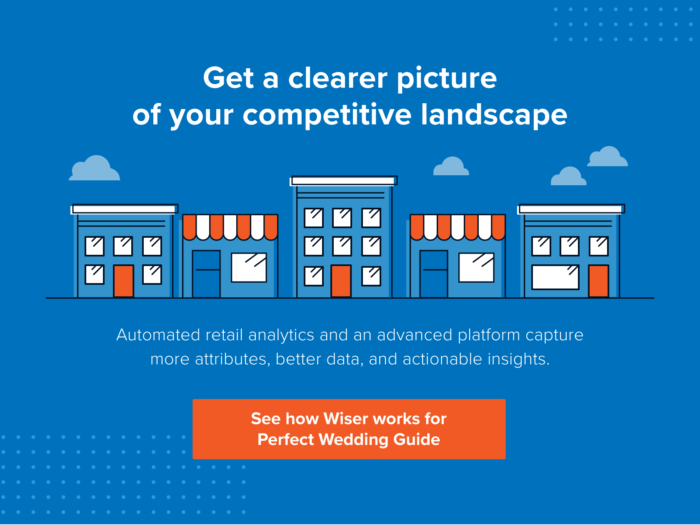Market intelligence—this is one of those fun terms that could mean a million different things to a million different people. And with so many different platforms, software, and data available, the term gets thrown around pretty loosely.
Don’t fall into this trap. Instead, understand the value of these types of insights and analysis and use this information to create strong, effective retail strategies that best serve your customers.
Here’s what you need to know about market intelligence, and how you can use it to help improve your retail operations.
What Is Market Intelligence?
As we mentioned, market intelligence can have many different definitions. For our purposes, we are looking at retail market intelligence: defined as aggregating multiple sources of information about the competition, shoppers, the economy, and the market as a whole into actionable insights to support your business.
Market intelligence is vital to your business because it keeps you informed about the state of the market and gives you insights into your competitors.
When done right, market intelligence goes deep enough that you can confidently make decisions. It can’t be a cursory Google search or a water-cooler conversation. You need concrete metrics that influence your understanding of customers, prospects, and competitors. It has to be easy to digest and share with others inside your company, especially executives.
Market intelligence allows your brand to distinguish itself from competitors and stay ahead of the market.
Why Is Market Intelligence Important?
Market intelligence, when done correctly, should show you the right paths forward. You have a number of goals for your business—broad ones, like increasing sales, expanding into new regions, or launching a new product—and more specific ones like why a particular planogram performs better or which price to set for a SKU.
Without intelligence, you may be guessing the answers to these questions. But, with high-quality analytics, you have numerical support for each of your efforts. By collecting and analyzing data on industry trends and behaviors, companies can create a holistic understanding about what is and isn’t working right.
One of the most important tools a company has while trying to stay ahead of the market is comprehensive insights into competitor actions and the constantly changing consumer landscape.
Many companies spend too much time looking internally, analyzing the subtleties of their organization without thinking about the big picture. Market intelligence helps you pause and look outward at the other players in your space and gather crucial context for why things are happening.
Advantages of Market Intelligence
Market intelligence allows your brand to distinguish itself from competitors and stay ahead of the market. But that’s not all! Market intelligence also provides:
- Competitive Advantage – By keeping a watch on the competition and any upcoming trends, market intel allows you to capture market share by knowing the best times to launch, before your competitors even know what hit them.
- Holistic Market View – Market intel gives you a wide-angle view of the market, taking into account trends, customer behaviors, competitor movements, and more. Having all of this information allows you to see the bigger picture and strategize accordingly.
- Improved Market/Sales Processes – Market intelligence can track customer issues to help with market segmentation, allowing you to understand which products would do well with different demographics.
- Fill Efficiency Gaps – Market intel can boost overall efficiency by identifying any gaps in the process and providing actionable insights so you can create the appropriate strategies.
All of this and more is possible with market intelligence, making it vital to the success of your company.
Types of Market Intelligence Data
You might be picking up on a trend by now: market intelligence can come in a few different flavors and is customizable depending on your business model, customers, and goals. In fact, this is a key reason why it’s valuable. You can build data that works for you.
But what should you be looking at? Here are a few examples of the types of market intelligence data you can capture.
Competitive Intelligence
Start with your competition. What are they up to? What are their strategies? This is the backbone of competitor intelligence. The competitive landscape can tell you a lot, including other brands’ strengths and weaknesses compared to your own, if they are planning an expansion or new product line, and how they attract customers and keep them happy.
A few big elements to consider at this stage are prices, promotions, and products.
What are their pricing strategies? How do they compare to your prices? Are they lower, higher, roughly equal? How about promotions—which promotional strategies do your competitors use to drive demand? Lastly, products are great to look at because they could expose areas where you don’t have an item that your competitors sell.
By understanding who consumers are choosing to shop from and why, brands can align their marketing efforts to direct products and messaging toward their ideal demographic.
COVID-19 has affected nearly all areas of market intelligence and serves as an example of how an event can have a ripple effect on retail.
Customer Insights
Next up is the customer.
Naturally, customer insights can tell you many things about how your business is perceived in the market. Depending on your business model, ratings and reviews are likely a major consideration.
Overall shopper sentiment is a big one at this stage and can include brand perception, price perception, and other factors behind how shoppers view your company. It could be favorable, negative, or neutral.
Consider questions like:
- How do customers rate your products?
- Are they satisfied with them?
- Are reviews doing well and driving more sales?
- Do customers have seamless shopping experiences with you?
- Are there opportunities for upsells and cross-sells?
- Are shoppers completing purchases or abandoning their carts?
With this knowledge, you can make informed decisions about how to better service your customers in the future, ensuring you build stronger, long-lasting shopper relationships.

Market Research
Market research is broader, and more focused on the general trends at play in your geographic area. You want to identify whether there are opportunities to expand into new regions or open new stores. This is particularly helpful if your brand is hoping to eventually go global.
Pay attention to how broad consumer trends are developing, such as changes to shopping behavior.
Economic trends are also at play here, including recessions, downturns, stimulus, and other major events. All of these have a direct influence on your health as a business and the desire of your shoppers to buy your products.
COVID-19 has affected nearly all of these areas and serves as an example of how one event can have a ripple effect on retail.
Product Intelligence
Finally, you need to analyze products in your market, yours and your competition.
What you’re looking for here are any service areas that can be explored, similar to how you’d look for new regions. Is there a type of product the market needs? Are there inefficiencies in existing products that can be fixed to better serve customers?
A good way to think about this is through the lens of jobs to be done. What are the jobs that your customers are doing? What are their goals? How does your brand complete those jobs?
This is also the perfect time to analyze where your brand does not meet customer needs or expectations. Is there a way your products could be better helping shoppers meet their goals? Do any of your products need updating or added features?
Market intelligence is vital to the success of any brand.
An effective use of marketing intel is gathering data, conducting analysis, and using that info to better your brand. But, as with any strategy, try out different approaches to find what works best for your company and its particular goals. Market intel is not meant to be used alone and can certainly be an investment
Editor’s Note: Contributing writer is Alexandria Flores. This post was originally published in March 2021 and has since been updated and refreshed for readability and accuracy.















